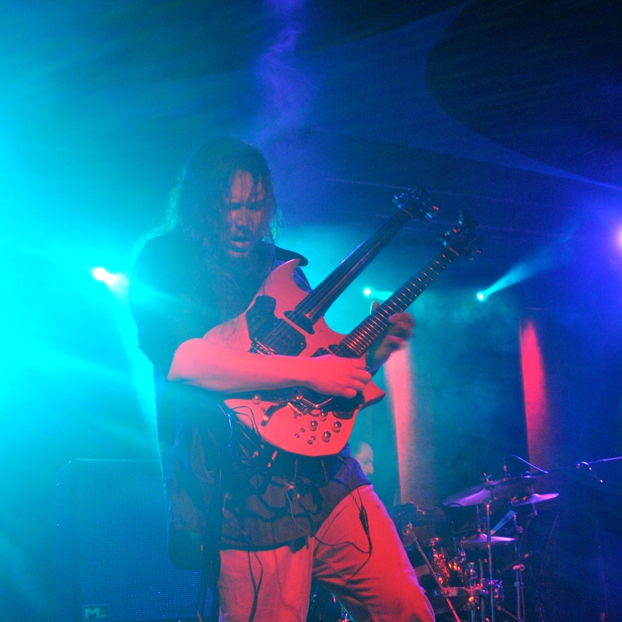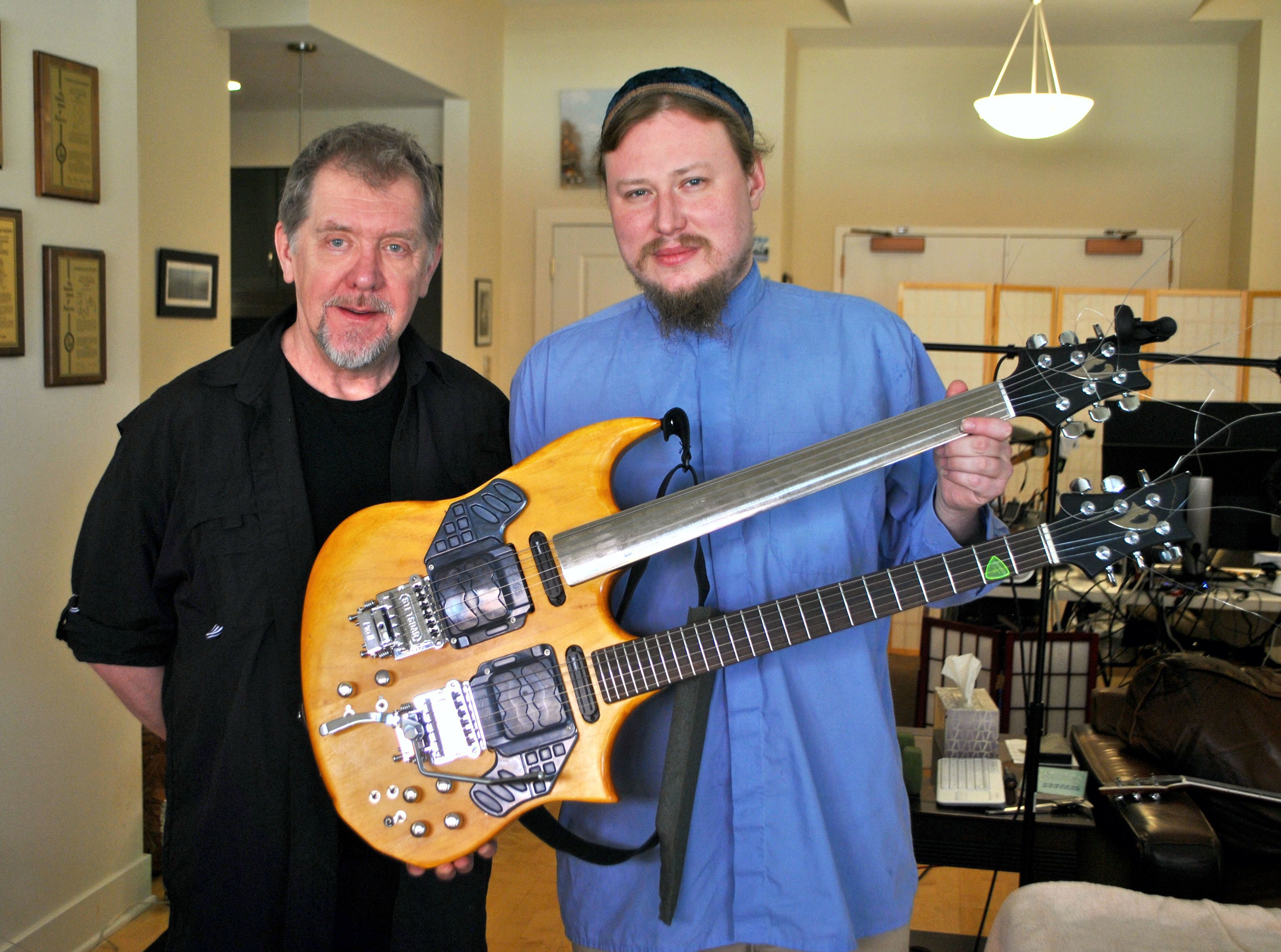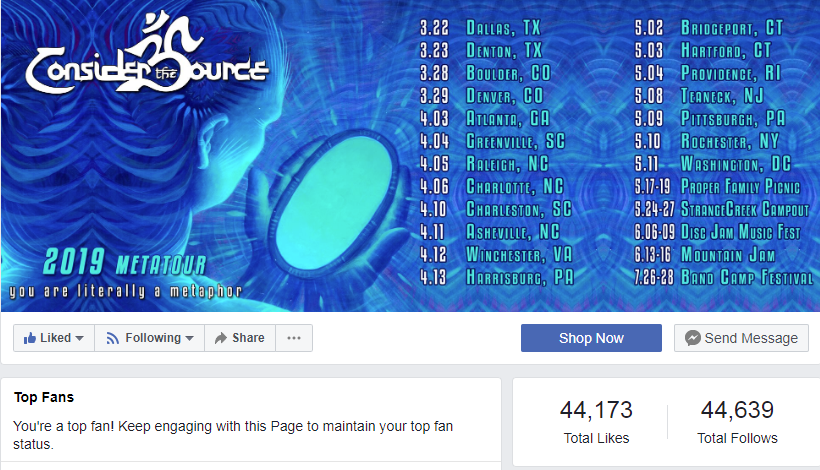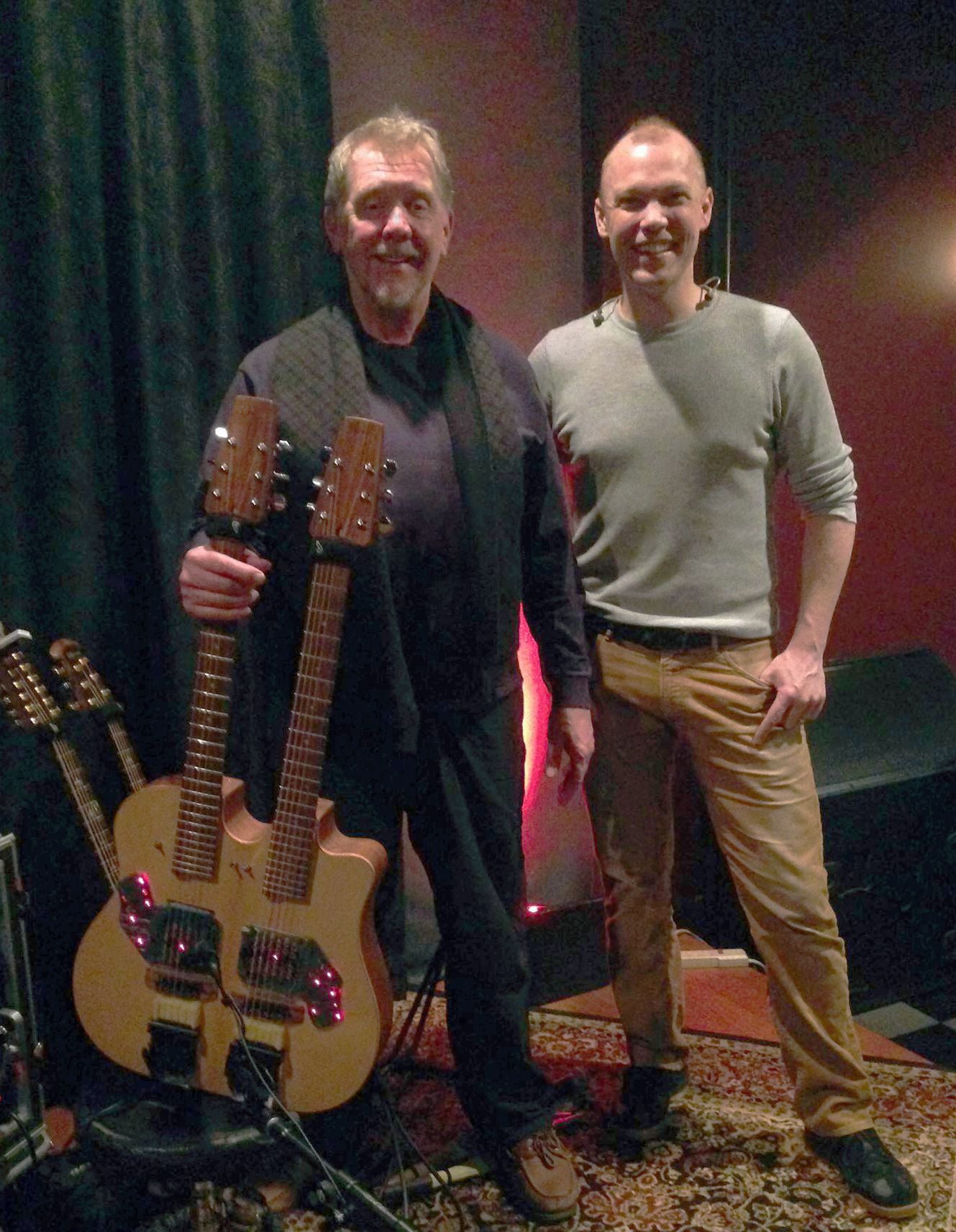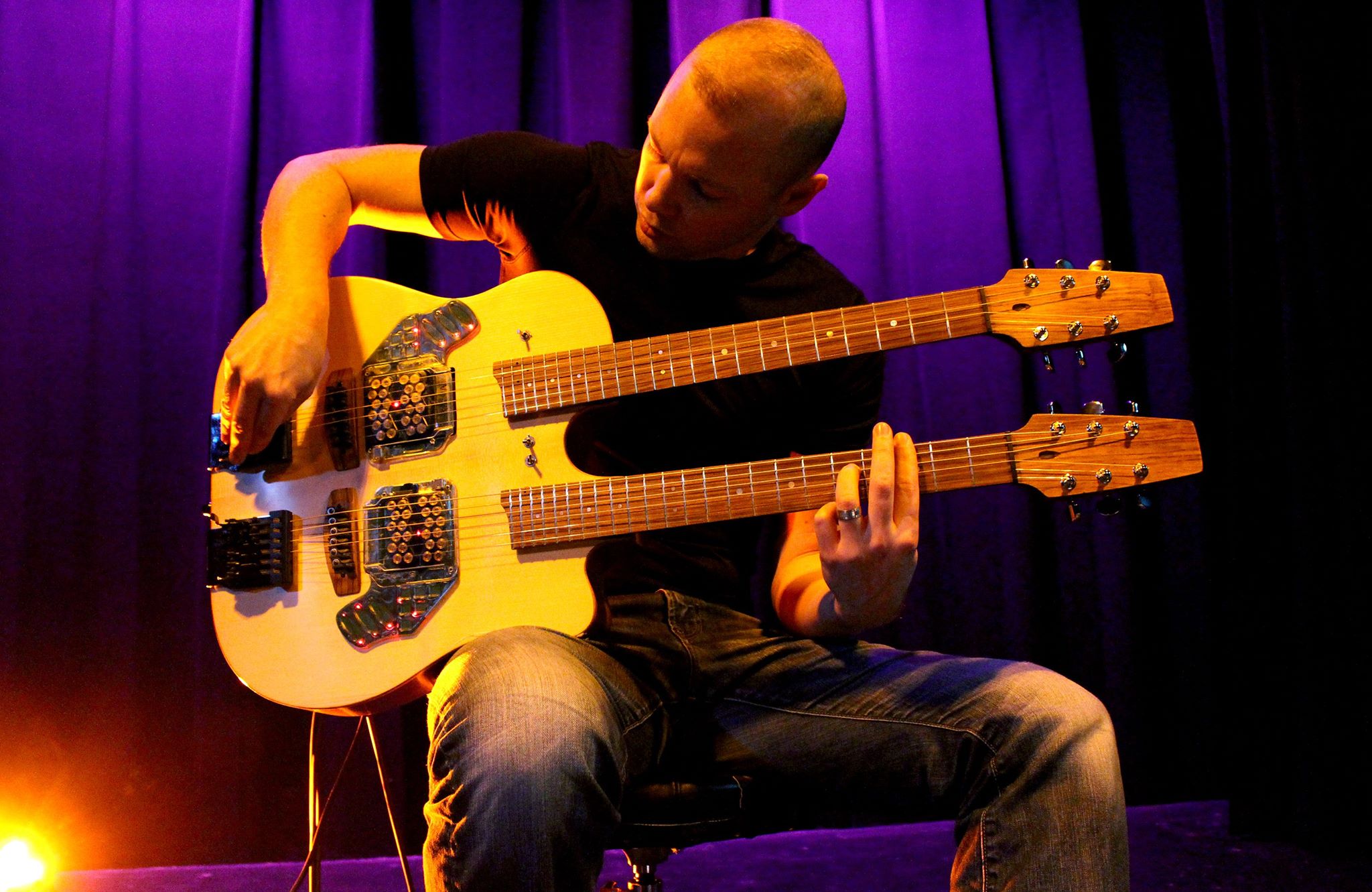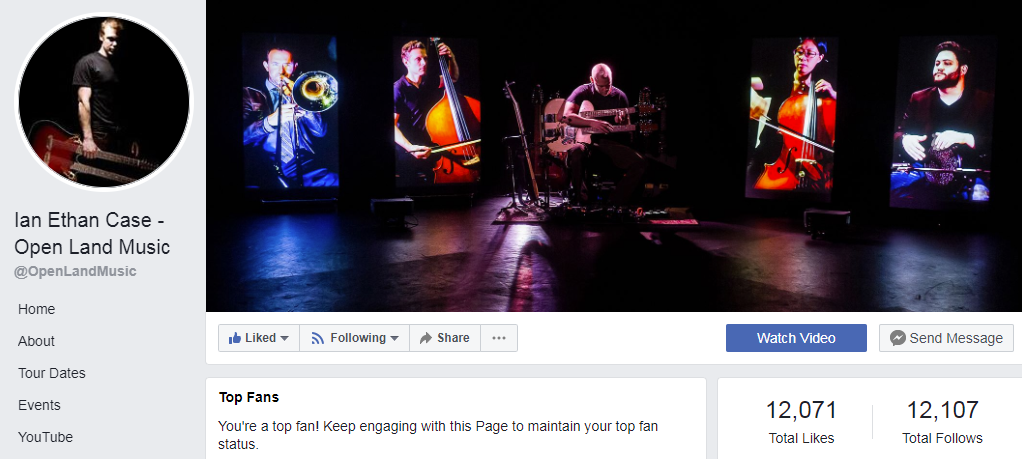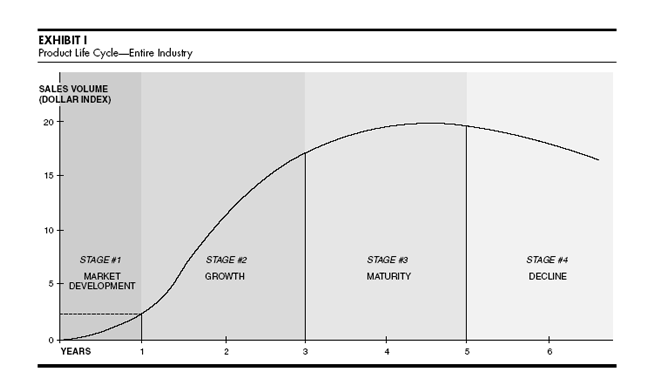Dream Guitar
Gabriel Marin is an influencer. Thousands of guitarists follow his trio Consider the Source. His Custom Dual Vo-96 Guitar is his main instrument. Ah, but those who aspire to play an instrument like his can only dream, because Vo technology is not commercially available.
Tap Dancer
Ian Ethan Case is an influencer, a preeminent exponent of tap-style guitar. He calls his custom-made dual Vo-96 guitar The Beast. Alas, those of his fans who aspire to play tap on a guitar like the Beast can only dream, because Vo technology is not commercially available.
Welcome!
I’m Paul Vo. Some years ago I developed a way to precisely control the vibration and timbre of a musical instrument string. This technology made possible the Moog Guitar, the Vo-96, the Wond, and the EMpick. Now I’m offering it to, well, possibly to you. Please read on.
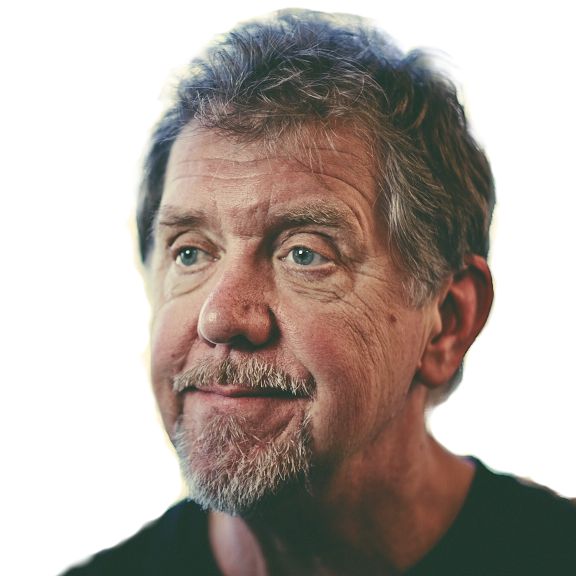
The Vo-96
In 2013 we introduced the Vo-96 via a Kickstarter campaign. We sold almost 100 Vo-96 systems, ranging in price from $1000 for a minimal kit to $4800 for a custom Wes Lambe acoustic with a Vo-96 pre-installed. Most were installed onto customers’ acoustic guitars. A few luthiers bought Vo-96 kits and designed lovely custom instruments around them. Three of these are solid body electrics. There are only two twin-neck Vo-96 guitars in existence, as seen above. Click below to view a gallery of other Vo-96 instruments created by these luthiers.
View a Gallery of Custom Vo-96 Guitars
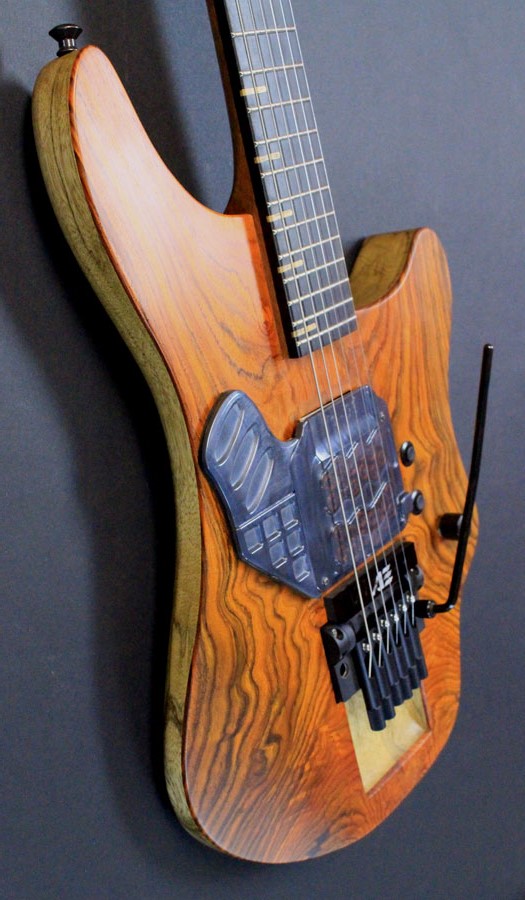
^^^ Luthier David Myka
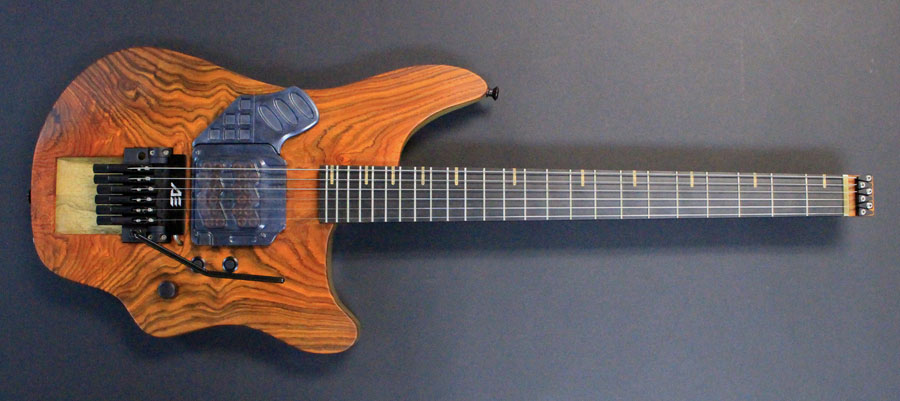
^^^ Luthier David Myka
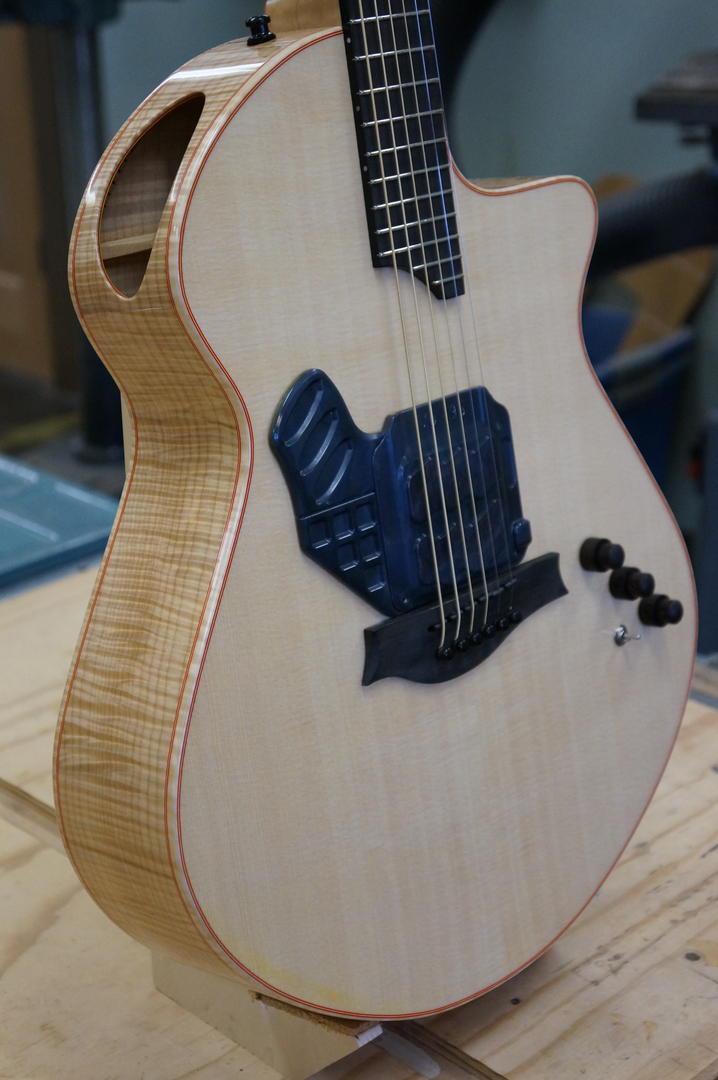
^^^ Luthier Todd Mylett
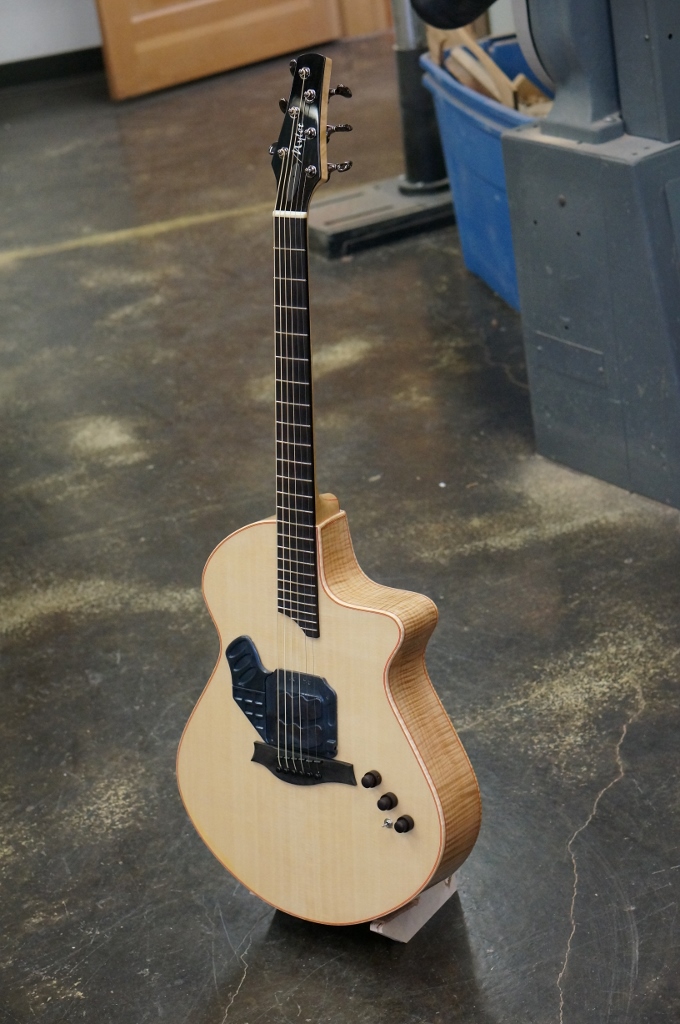
^^^ Luthier Todd Mylett
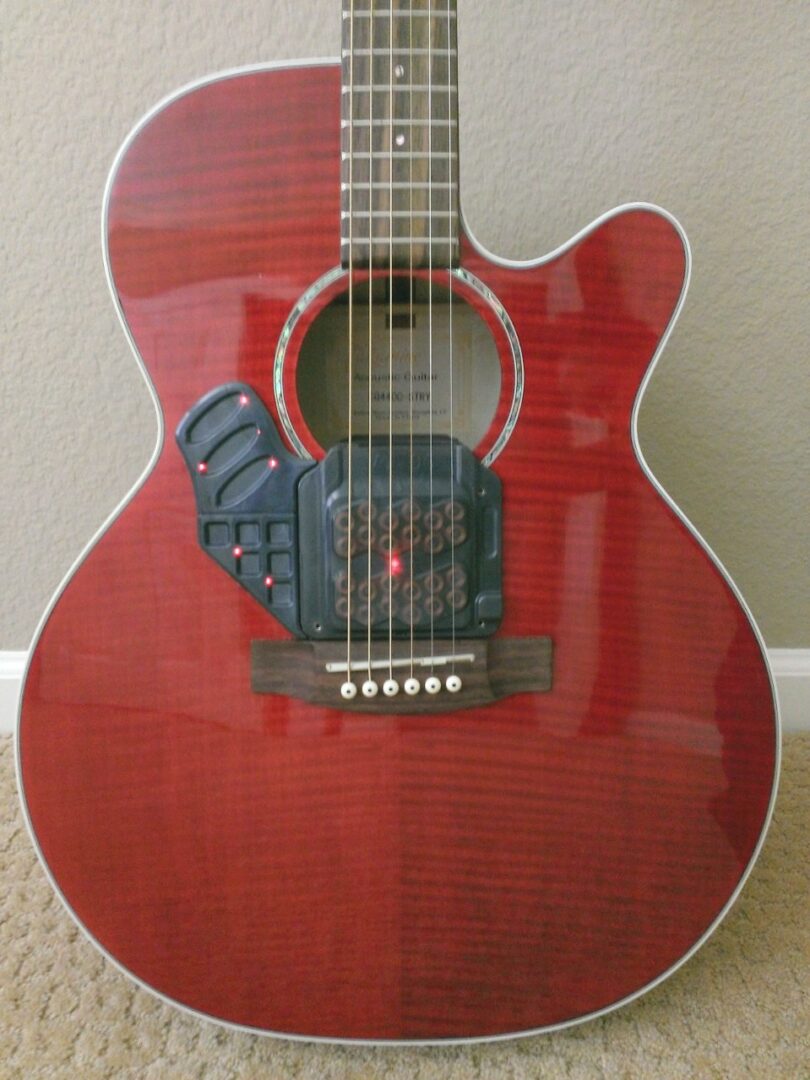
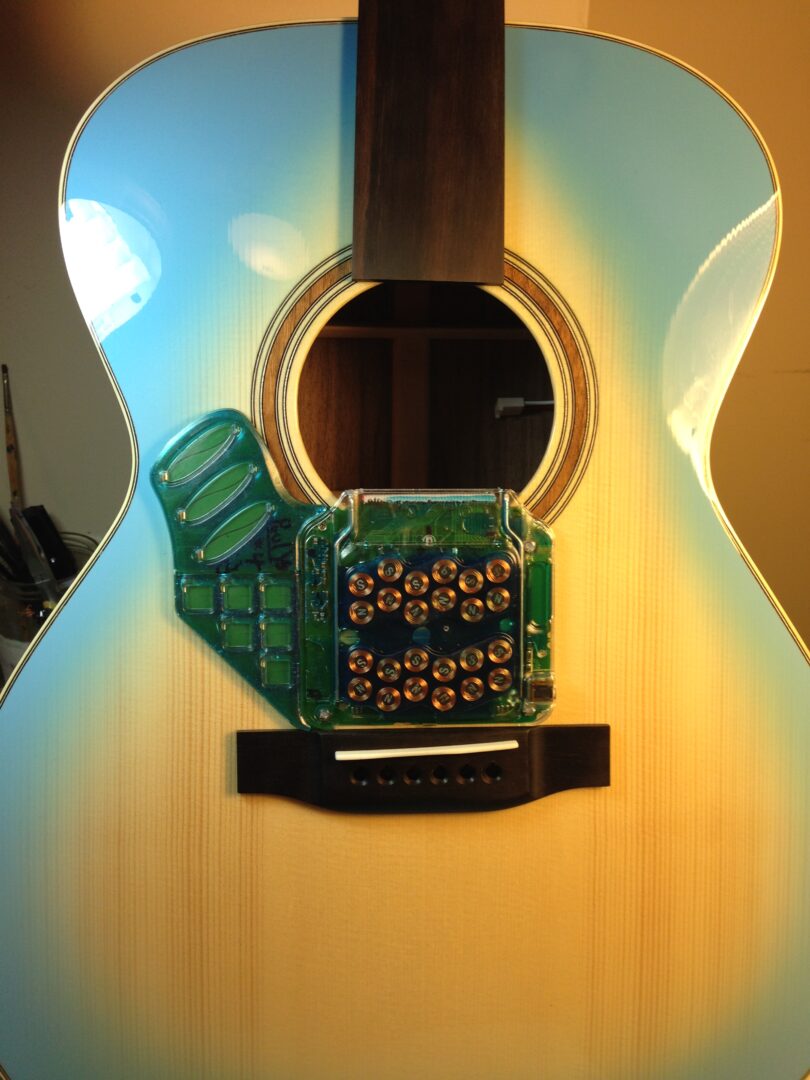
^^^ Luthier Wes Lambe
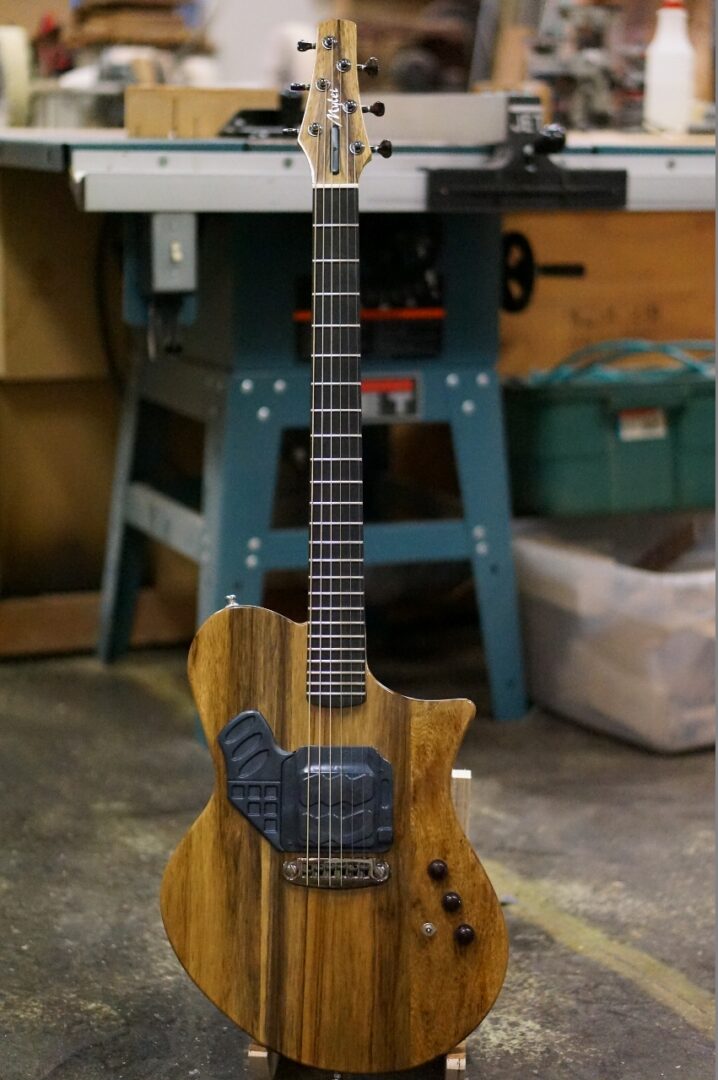
^^^ Luthier Todd Mylett
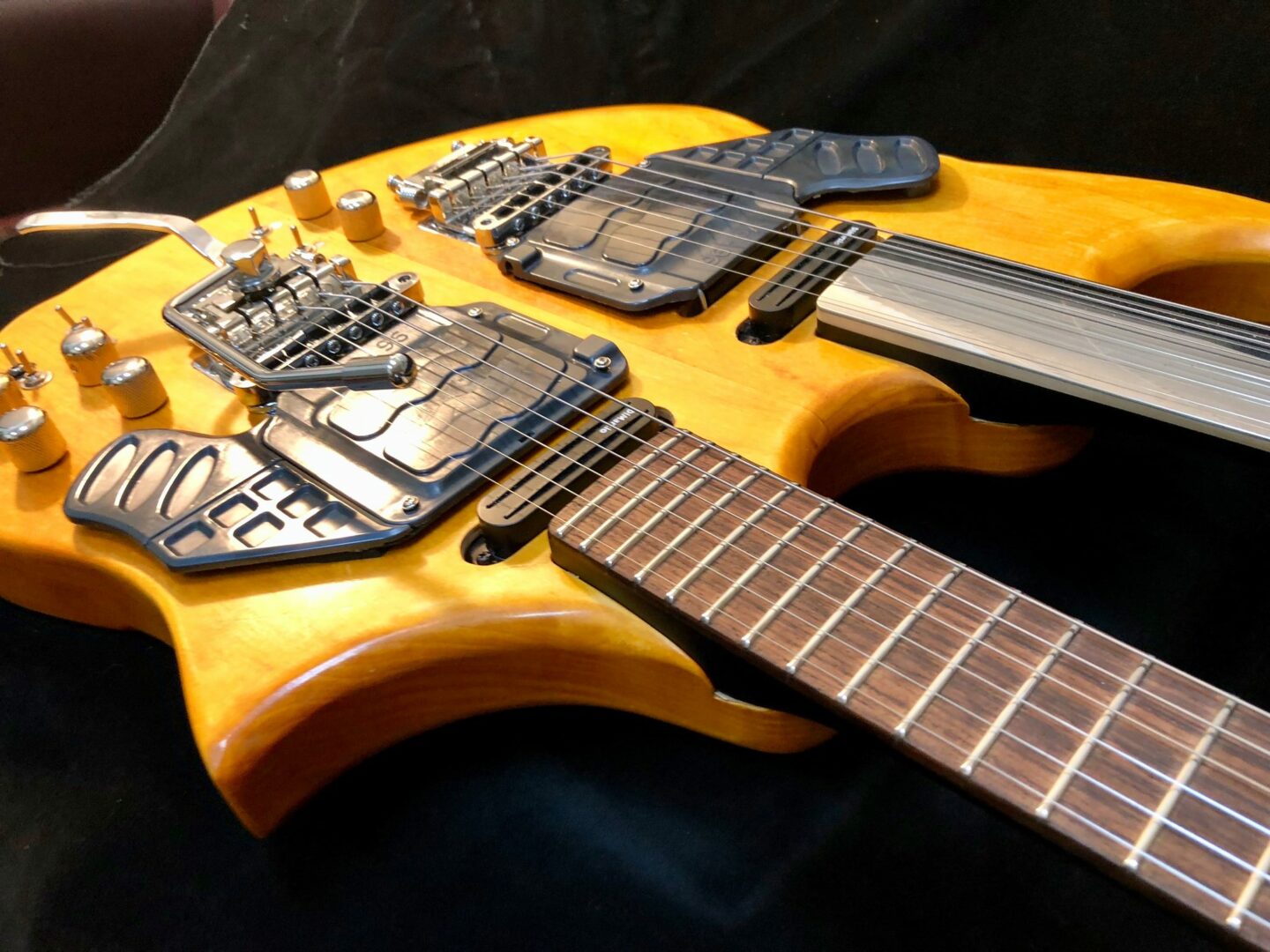
Gabriel Marin’s Dual Vo-96, by Luthier Jim Kozel
Isn’t it curious that these fine and varied musicians love and play their Vo-96 guitars, yet no one else can buy one?
Gabriel Marin plays his dual neck Vo-96 on every track of the latest Consider the Source LP. As the inventor, it is an honor to hear the Vo-96 used so brilliantly for music that moves from gentle and melodic to searing metallic shred. I’d always hoped the Vo-96 would be used this eclectically. Hit this link to a see a video.
Ian Ethan Case taps into something heavenly on his semi-acoustic dual neck Vo-96 guitar he calls “The Beast”. His “Meet the Beast” tour across the US introduced thousands to the Vo-96 in 2017. He plans several compositions for the Vo-96 “Beast” on his next album.
Award winning Composer/Producer Cornel Wilczek owns both the Vo-96 and a “Paul Vo Collector’s Edition” Moog guitar and uses both extensively to produce soundtracks for Australian films and TV. (In 2008 I developed the Moog Guitar for Moog Music Inc. Many influential people from Brian Eno to the late Lou Reed have used their Moog Guitar in performance and recordings. See “More about the Moog Guitar”, below.)
Killick Hinds is a prolific avant-garde performer and composer who has released 28 (!) albums of inspired improvisational music featuring his Vo–96 guitar. Hear Killick Hinds on Bandcamp.
Tyler Ramsey’s song, “A Dream of Home”, from his 2019 solo album “For the Morning“ features Tyler on his Vo-96 acoustic guitar. For many years he was lead guitarist with Band of Horses but he has recently returned to solo work. Tyler Ramsey was our featured artist in our 2013 Kickstarter and regularly played his Vo-96 guitar with Band of Horses.
Other prominent guitarists using the Vo-96 include: Steve Rothery (Marillion), Steve Ball, Kurt Swinghammer, Dan Phelps and many others.
These guitarists love the Vo-96 for what it empowers them to do. Their enthusiasm for it has withstood the test of time. This proves there is a market for such instruments.
License this Technology
This web page exists to try reach those few individuals who can take advantage of this opportunity. Are you interested in bringing to market a new class of product that has solid patented technical substance? A groundbreaking product that comes with less market risk because influential, professionally performing musicians are already enthusiastically using it? If so, I hope you’ll read on.
Leaving? One final request: If you see this isn’t for you but you think it ought to happen, you can help: Would someone you know be interested in this opportunity? A senior exec at a company that builds musical instruments? The owner of a company that designs and builds electronic devices for musicians? A friend “who knows someone who knows someone who…”? You can help simply by sharing this page with this person. Help me reach across those famous “six degrees of separation” to contact the right people. Thank you for your time and networking!
Still with me? Allow me to provide some more detailed background on this technology.
In the following series of expandable sections I present:
- the capabilities of Vo-96 technology,
- how it relates to other music technology products and to the market,
- what products, instruments and features it makes possible,
- what this could mean for you.
Collapse All →
↓ Click or touch to expand ↓
What is Vo technology?
Vo Harmonic Control Technology:
Every sound we hear can be analyzed by decomposing it into its individual harmonic components. (This is known as Fourier analysis.) The particular character of the sound is thus revealed as different amplitudes of these harmonics. Going the other way, any sound we desire can be built up by adding together the harmonics of that sound in correct proportion.
A musical instrument string is a wonderful harmonic resonator capable of very complex harmonic vibration. We experience this harmonic flexibility when we play music on such strings. The same string will produce different sounds when plucked, bowed or struck. A string also makes different sounds depending on where along its length is is played. But all these familiar string sounds represent only a small portion of the sounds a string can theoretically produce.
These unheard string sounds can now be accessed with Vo Harmonic Control technology. The full series of possible harmonics can be excited on a string in any combination and any relative amplitude. A string therefore can theoretically produce the same range of sounds as one can obtain from a single oscillator and filter bank, the basic sound source of every keyboard synthesiser. Vo Harmonic Control technology makes this possibilty real.

The Vo-96:
The best demonstration of Vo Harmonic Control currently available is the Vo-96. The Vo-96 controls 96 individual harmonics of the strings of a guitar to physically synthesize new sounds. The audible output emerges acoustically and directly from the strings and the guitar body, just as with any acoustic guitar.
It’s hard to believe when you hear it but there is no loudspeaker or exciter to drive the body of the guitar. It’s all natural, all acoustic. The strings are made to vibrate differently through harmonic control. This gives the instrument a user-defined voice.
The Vo-96 is the result of a pilot project. It clearly demonstrates the fact of individual harmonic control applied to and resulting in a playable musical instrument. However it is only the first step. It’s like the very first electronic synthesizer. Vo Harmonic Control tech has a long way to go. A long evolution of products are possible just as we’ve seen with every other foundational technology.
The Vo-96 lacks the kind of user interface to harness the full capabilities of its control technology. The UI it does have is an experiment of its own; it works, but it does not provide the user with the kind of total harmonic programming and sequencing that is possible. It’s a darn good first step, I’ll say this much for it, but at this point I know how to do so much more with this technology – more than I can accomplish with the resources of a single inventor making his living as a consultant.
So here it is, this technology. It’s real. It’s not just an untested idea. You or your company can license it or possibly acquire it outright. I will do all I can to help you succeed with it. It’s foundational. Someone is going to do this. Some company will take this into the future as the basis of a whole new segment of the musical products industry. All you have to do is contact me!
My contact info is:
or text me at 949.231-8667 .
To avoid phone tag, please suggest a day and time for a phone conversation and I will get back to you then. I look forward to hearing from you!
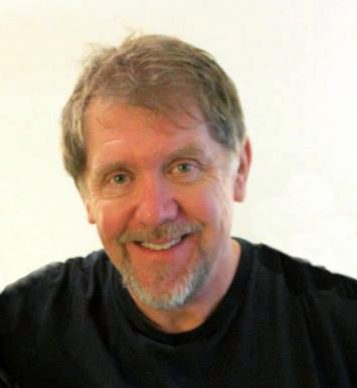
What is a Vo-96?
We released this video just before our 2013 Kickstarter campaign:
(Produced for Voinventions LLC by Chris Stack.)
Physically, the Vo-96 looks like an unusual pickup. It sits under the strings, preferably quite close to the bridge. There is a touch-based user control area. An enclosure houses digital processing circuitry and is suspended inside the cavity of an acoustic guitar. For solid-body guitars, these electronics were installed within a routed cavity.
The next Vo-96 will be a significant evolution on many fronts. Most immediately notable, the pickup will be smaller and less obtrusive than before. The user controls will be different, (many players prefer knobs to touch pads), and relocateble to different areas of the instrument. With today’s less expensive yet more powerful chips and a new, one-piece design, the next Vo-96 will be much less expensive to manufacture. In its simplest form it will fit into a dual-coil pickup bay.
Here is what the original Vo-96 looked like:
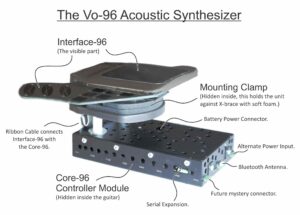
Functionally, the Vo-96 is a 96 channel harmonic vibration controller governing every significant harmonic component of string vibration to generate new sounds. The Vo-96 has no electrical output signal. It doesn’t need one. This is a fundamentally different and new electromagnetic method of sound synthesis that produces its output physically in the form of an altered vibration of an instrument string. You can feel this altered vibration in your hands and you can hear it acoustically. It is no less real than the instrument’s natural sound, yet it can sound nothing like a guitar.
Timbre can be controlled to evolve in a predefined way during the course of each note. Notes can be made to fade at a prescribed rate from staccato to forever. (For a simple example, click and watch this short video demonstrating harmonic control. Toward the end of it, I emulate the decaying harmonics of an acoustic guitar note.)
Individual harmonics can play little tunes over top of the note, similar to the physics of overtone singing or “throat singing”. This opens up a “vertical” dimension for composition within each note. Nothing else on the market does this.
The science of the Vo-96:
Any sound we desire can be built up by adding together the harmonics of that sound in correct proportion. The Vo-96 does exactly this by acting upon the strings. It controls each individual harmonic’s contribution to physically synthesize new sounds. The audible output emerges acoustically, directly from the strings.

The original Vo-96 was designed mainly to attach to acoustic guitars. We coined the term, “Acoustic Synthesis”, because the synthesized sound is instantly heard acoustically from the strings themselves – no amp or speaker is required. I maintain an “Acoustic Synthesis” page on Facebook that tracks the history of the Vo-96 in posts and pictures.
From a guitarist’s point of view, a Vo-96 guitar is an alternative technology guitar synthesizer that plays like a guitarist’s dream. There are no pitch errors. There is zero latency. It’s not at all fussy about your style. This is because it’s all physical, immediate and acoustic. (Except for a digital signal processor computing how to drive the strings to give you the sounds you want.) You can extend your playing technique with it; you can do things you couldn’t do before. It’s loads of fun to play, and yet it is a serious music-making instrument that obeys your hands and supports your virtuosity. It’s insanely high-tech and electronic, yet its sound is acoustic. It’s like nothing you’ve ever played before.
Here is a video from my Voinventions YouTube page. Most videos there are of guitarists having their first-ever experience playing the Vo-96. This one is of guitarist Vincent Crow, who agreed to video his first-time reactions to various Vo-96 features. He discovered one of the scripted harmonic melodies and improvised this track. The notes you hear that he does not appear to be playing are scripted harmonics being “played” by the Vo-96. The sound was recorded with the single microphone in the picture. Live, mono, room-dry and purely acoustic:
Vincent Crow:
In this next video, Gabriel Marin is playing his dual Vo-96 instrument. He’s making good use of the Vo-96, and he is also using a variety of pedals and effects. It’s clarifying to keep in mind that most of the unusual and interesting sounds we hear from keyboard synthesizers consist of layers of sound and layers of echo and reverb. This is how you get a “thick” sound. A Vo-96 guitar is a source instrument, not an effect. It is very much intended to work together with pedals and effects designed to process a signal from a source. Innovation welcome!
Consider the Source:
What is an EMpick?
The EMpick is a hand-held one-string-at-a-time device that achieves some remarkable effects. I’m in the process of completing this device and I have already taken over 400 pre-orders. Electrically, the EMpick is based upon a single channel module of the future Vo-96. With the EMpick, I’m already testing many of the updates I want to bring to the next generation of the Vo-96 system. The EMpick is a different way for people to experience Vo-96 technology.
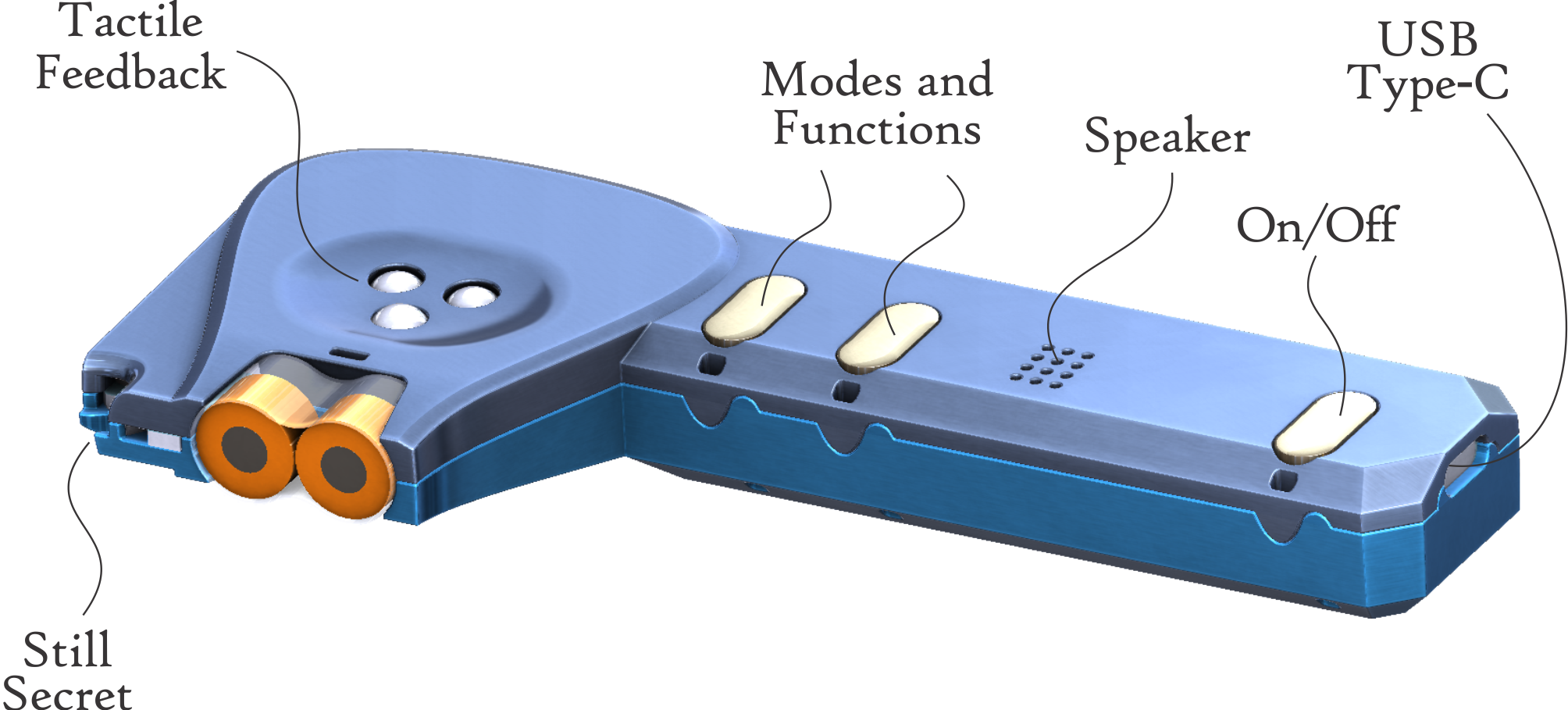
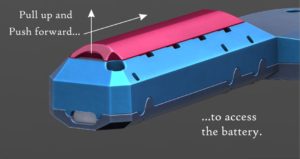
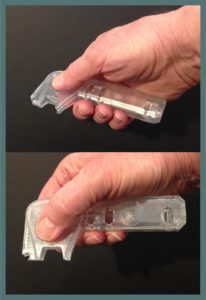
About the Opportunity:
This is is an opportunity to license, manufacture and market Vo-96 Technology products under your brand.
My goal is to get this technology out there as widely as possible. The terms of a license will be realistic and accommodating.
Make a bold statement with a significant and innovative new product. This is an opportunity to achieve this faster, at lower cost and with less risk.
Reduced Technology Risk:
I have the technology, it works and has been field tested. It represents about 15 years of research and innovation. If you make this your starting point, you can concentrate on delivering the technology in your way with features that highlight and differentiate your brand. You don’t have to worry about whether it’s really going to work or not at the core.
Leap over the unknowns by licensing this technology. The patents tell some of the story, but there are key improvements I’ve discovered since those patents were issued including an alternate and superior harmonic control system. Save time and money; avoid the dead ends and not so great solutions. You can invent on top of this field-proven technology and keep your innovations proprietary. In fact, this is what I hope you will do.
Sales Projections:
Ultimately everything rests on market penetration and this depends on a product’s appeal, usability and price point — all things mostly within your control as a licensee developing your own product. But how big is the available market? Guitarists and bass guitarists form the bulk of the market worldwide. Here is what we know:
North America: 2018 stats, from Music Trades Music Industry Census:
- The total retail value of new guitar sales was $1.5 billion.
- Acoustic guitar sales were 1.5 million units.
- Electric guitar sales were 1 million units.
- Bass guitar sales were 100,000 units.
- The average price of a guitar was $550.
- About 200,000 guitars priced above $1250 were sold.
Vo Harmonic Control technology works on any steel-stringed instrument. (I don’t have numbers for nylon string acoustic guitars but the majority of acoustic sales are certainly steel string guitars.)
Guitars have a long useful life. Some people buy multiple guitars but some play the same guitar for years. To absorb about 2 million guitars a year, there probably are at least 20 million active guitarists with some money to spend.
What about guitar effects processors and pedals? Music Trades reports:
- Total retail value of new effect units was $170 million.
- Multi-effect processor sales were 170,000 units.
- Effects Pedal sales were 1.3 million units.
- The average processor cost $325.
- The average pedal cost $83.
Various products can be developed to address different price points. My forthcoming EMpick product will retail for $249. It’s not unreasonable to project EMpick sales building to 20,000 per year or more. A pickup replacement product to retrofit harmonic control to existing instruments is possible. A complete instrument such as a guitar with integrated Vo Harmonic Control would be priced higher and could generate higher revenues.
Reduced Market Risk:
Completely new, category-defining products like the Vo-96 are both rare and risky. I’ve done quite a bit to reduce this market risk. You’ll be marketing the updated Vo-96 into a market that already has a small simmering core of pent-up demand. Several active performers are out there playing Vo-96 enhanced guitars and generating more curiosity about the Vo-96 with every gig.
Does this nascent demand really exist? Well, here is a link to one example. You can find more like this on other forums. I’ve received many requests via email.
One doesn’t typically have this advantage when introducing a radical new product. We have it because we seeded the market with prototype Vo-96 systems back in 2014 and now demand is there to harvest.
The same points apply to the EMpick, but in a different way. It’s forerunner is the Ebow from Heet Sound Products. This is the original hand-held single string sustainer that’s been selling for about 40 years. Almost every guitarist has tried the Ebow, so they already have some idea of what the hand-held EMpick is and how to use it.
The Empick uses Vo Harmonic Control technology. Compared to the Ebow, the EMpick has much faster response, more power and far more harmonic flexibility. It has features the Ebow doesn’t, such as virtual tremolo picking, injecting synth tones at the string’s pitch into the pickups of an electric guitar, and analyzing a sound, then emulating its timbre through physical synthesis on an instrument string. Of course the EMpick is more expensive, $249 versus $100 for the Ebow. It’s hard to find a guitarist who hasn’t played an Ebow. Many may want to reach up to a more powerful and advanced device that is conceptually similar and familiar.
We’ll be shipping the EMpick later this year to our 400+ supporters who pre-ordered.
I am willing to license the EMpick trademark and design. If you are interested, lets talk about it.
This is an Ebow:
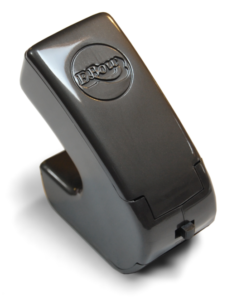
This is an EMpick:
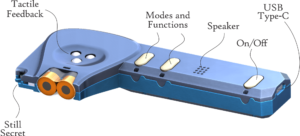
The Ebow, incidentally, has remained essentially the same for 40+ years. This is what this market for music electronics and instruments is like; a great product can go on unchanged and selling forever.
Market Characteristics:
Products that are considered by musicians to be ‘instruments’ are often played and treasured for decades. And this includes very technical musical products; look at analog synthesizers for example. It takes time to absorb a new kind of instrument. Musicians must alter or evolve new technique. Musical ideas take time to form. They were shipped in 2013 but it was 2017 before early adapters began playing their Vo-96 guitars publicly. Their ongoing influence is gradually creating a wave of guitarists who want one.
Clicking the graph below will open an article in the Harvard Business Review about the life cycle of products. It’s by Theodore Levitt and it’s from 1965 – old but it holds up. It’s an interesting piece that opens with an excellent summary review of the concept of a product life cycle. I’ll be leaning a bit on his terminology and concept in relation to the Vo-96.
Levitt describes stage 1, the “market development stage,” by pointing out that, “Bringing a new product to market is fraught with unknowns, uncertainties, and frequently unknowable risks. Generally, demand has to be “created” during the product’s initial market development stage.” and, “While it has been demonstrated time after time that properly customer-oriented new product development is one of the primary conditions of sales and profit growth, what have been demonstrated even more conclusively are the ravaging costs and frequent fatalities associated with launching new products. Nothing seems to take more time, cost more money, involve more pitfalls, cause more anguish, or break more careers than do sincere and well-conceived new product programs.”
Yikes! But he’s right. When it comes to music devices, product after product has flopped. There are always some musicians who buy them and try them, but unless the word of mouth is good and musicians continue to use them, many products end up in a dusty corner where they lie forgotten.
Consider what has been going on with the Vo-96 in light of the above. I shipped the last one out by mid 2014. Now 5 years later, with zero prompting from me, an eclectic group of guitarists are still playing their Vo-96 guitars. In fact, the Vo-96 is more prominent today than it ever has been, and it has done this all by itself. I’ve never advertised it, not since they all sold out in early 2014. I have diligently supported my customers; at this moment I’m not aware of any problems or complaints. And yes, it’s no doubt true that some Vo-96 guitars are collecting dust in a corner somewhere. (Although I’ve never seen one offered for sale.)
My point is that the technology of the Vo-96 has passed the stage 1 test. Enough serious guitarists have decided it is worth an ongoing commitment of their time and virtuosity. Even though it’s not from any of the big recognizable brands, even though it is the very imperfect result of a leap into uncharted territory, they have embraced it and they play it. We can look at this and say with a good level of confidence that a Vo-96 guitar would generate a lot of interest, would likely sell well, and most importantly, would likely generate the kind of ongoing organic sales growth that drives real product success.
This not just a product, it is a new technological foundation that can support many different products and variations for different instruments over time. It’s a new form of sound synthesis. Many different products can be developed on this foundation.
“The world does not automatically beat a path to the man with the better mousetrap”
Yes, no kidding! But this technology has already won some hearts and some durable allegiance. And there are increasingly well-known guitarists out there showing it off as they tour the world with their Vo-96 guitars. The biggest risks of a radically new and different product is that it won’t catch on. But here is the Vo-96 being played every day, five years after being purchased. And this happened on it’s own. I have no deals with any of these musicians. They bought their Vo-96 just like any other customer, and everything they’ve done with it has been on their own initiative.
The Patents:
You’ll quickly see that these patents belong to a “Paul Ierymenko” whereas most of you know me as “Paul Vo.” Paul Ierymenko is my legal name. When I came to Asheville and began working with Moog Music, I decided I needed a simpler alias. I adopted “Paul Vo.” “Vo” is short for “servo”, because my control systems are fundamentally servo systems. “Paul Vo” is now the name I am most widely known by. It is also my business DBA and it is also my registered trademark, my brand and the name I commonly use.
I hold several patents relevant to the EMpick and the Vo-96. The Vo-96 is a subset realization of the device described in this patent:
The link above opens a window to Google Patents, a great service for viewing patent text and drawings. The USPTO makes it difficult to view drawings as a special viewer app is required.
This 7,667,131 patent is entitled, “Player technique control system for a stringed instrument and method of playing the instrument.” Catchy title, eh? It’s a technical but mostly non-mathematical document that captures my overall vision for the evolution of the Vo-96.
As you can see, I’m not making this all up as I go along. I did this thinking, experimenting and planning a long time ago. The Vo-96 was the major “proof of concepts” platform for this technology, but even the Vo-96 realizes only a fraction of the features and capabilities conceived in this patent.
The difficulty has been in the cost of getting the firmware written. I can’t justify such an expense to support only the few Vo-96 systems out there, and I don’t have the funds to manufacture more Vo-96 devices to sell and fund the time and expense to update the Vo-96 hardware, and write this additional firmware. But the ideas are all here in this 7,667,131 patent. It expires in 2026.
This is the patent covering the EMpick. It’s entitled, “Handheld vibration control device for musical instruments.” This patent will remain active until 2036. It captures my thinking about the EMpick and presents some the various features and capabilities of the EMpick. I have a second patent in the works to cover some new developments I’ve made and this patent will apply both to the EMpick and to the next Vo-96.
This is my first patent in this field. It describes my basic control system and shows how to establish control of individual harmonics. It expires in September 2019. However, it has been superseded by the other patents listed above and by my new and superior control system.
“Stringed instrument with active string termination motion control” is an interesting patent. The principle is solid and demonstrable, but quite a bit of research and development will be required to realize this idea in a commercial form. What this does is control string vibration by modulating string tension. This is possibly the best way to control strings that are not responsive to magnetic fields such as the nylon strings of classical guitars. This patent expires in mid 2024.
My new control system realizes collocated control with a continuous mode drive circuit. This is a new and superior harmonic control method that has even greater drive power, drives any diameter of string and will drive any vibratory element that is magnetically responsive, i.e., any ordinary electric or acoustic guitar string. I will soon file a patent on this.
Key advances since the original Vo-96:
The Vo-96 represented a significant step forward in my vibration control technology over the all-analog version in the Moog Guitar. The version I’m working on today is even more advanced than the original Vo-96. Some of these advances have not yet been patented.
The next generation Vo-96 will implement feature-extracted commands. This is a method detailed in my patents of detecting when the guitarist is using certain techniques such as for example applying vibrato by shaking the string and reinterpreting these actions as commands to change parameters of the Vo-96. For example, a note could reliably transition to sound an octave higher in response to detected vibrato, or a note could sustain forever as long as vibrato is detected, or the reverse. There are so many things like this that can be realized with feature extracted commands.
The next Vo-96 will have user-generated harmonic scripts: The original Vo-96 has harmonic scripts, but these can’t be changed or added to by the guitarist. My purpose back then was merely to demonstrate this technology and to prove that it works. To unlock the musical utility of these scripts, the guitarist must be able to define them. The next Vo-96 will ship with at least one way of doing this. Additional methods can be introduced over time via firmware updates.
This feature will first be introduced in the EMpick. The EMpick has a microphone; the most direct and intuitive way to input a sequence is to sing or whistle or play the desired harmonic sequence into the EMpick. There are several other possibilities such as inputting a .wav file to the EMpick, or writing an actual script in a text editor.
A user-generated harmonic script is a powerful and unique concept. For example, the guitarist may play a melody in the usual way, and each note of the melody may contain it’s own corresponding melody played upon the sting’s harmonics as the note evolves. You compose then, not only with notes, but with harmonic melodies within each note. There are many interesting possibilities.
The next Vo-96 will feature synthesis of the critical first fraction of a note known as the “attack”. Since note attack is considered to be the more important factor differentiating one instrument sound from another, this new attack synthesis feature will make the new Vo-96 especially well suited for sound design.
The next Vo-96 will work with any kind of steel-core strings: Special all-steel strings were required by the original Vo-96 and the Moog Guitar. Although some excellent strings exist that meet this criterion, it has been a restriction that reduced acceptance. Well, the upcoming EMpick and the next version of the Vo-96 will work with most varieties of nickel-plated and nickel-wound electric guitar and bass strings, and with ordinary steel-core bronze wound acoustic strings too, coated or not.
How is this different from an Ebow or a Sustainer?
Isn’t this just a six-string Ebow? Isn’t this just a sustainer like the Fernandes or the Sustainiac?
These elementary sustainers are not control systems. Their sustain response is weaker and slower, and is usually uneven and unreliable at certain fret positions. A sustainer can’t start or stop any particular harmonic vibration. One can’t design a particular sound the way one can do sound design with a synthesizer. You get what you get. This is because a sustainer is not a control system. Sustainers are great devices that many musicians have used very creatively and musically. But they are not capable of synthesis.
The Vo-96 is a control system. It can be set to behave as a perfect sustainer with fast, powerful response that is equally strong on any string and at any fret on the neck. But the Vo-96 goes far beyond this. It can control the duration of notes, from very long to very short. And most importantly, it can synthesize new sounds upon the strings. It makes possible real synthesis and sound design physically on the strings of a musical instrument.
It’s not analog, it’s not digital, it is physical.
With the Vo-96 the guitarist experiences strong, evenly balanced harmonically controlled notes and chords on every string at every fret position, notes of defined timbre, notes of any duration from infinite sustain to staccato, all precisely governed by sophisticated DSP mathematics and a patented control system.
“I can get these sounds in other ways.” Perhaps so. I suppose any sound can be sampled and played back, including the sounds of a Vo-96. There are “guitar synthesizers” which can control a sampler to play back samples at the pitch of your notes, or allow your guitar to mimic a keyboard to control any electronic synthesizer via MIDI. This is useful; you can access all those great sounds with your guitar. However, you’ll have delays and occasional errors in pitch, missing notes, “ghost notes” you didn’t play, etc. Nuance of technique will be missing or blurred. The experience of playing such a device is often frustrating and never feels natural. It’s nothing like the authentic experience of playing with strings that are really producing the sounds you hear. This is one of the main reasons people like Gabriel Marin play a Vo-96 instrument. It’s not just how it sounds, it’s how it feels and how it plays.
With many effects and pedals, sound is disconnected from sensation. You pluck a guitar string. It goes “plunk” and fades, and this is what your fingers feel. Meanwhile, a pedal takes this “plunk” signal from your guitar and processes it into something more exciting and longer lasting. The more different the pedal sounds, the less its sound matches the sensations at your fingertips. It’s not truly authentic, but it’s usable and pedals are very popular.
Pedals work better when the Vo-96 is in play. An effects pedal receives a signal from a Vo-96 guitar that is quite different than the usual guitar string signal. Pedals respond to this signal in new ways. You can get some great new sounds out of old pedals with the Vo-96.
With the Vo-96, sensation and sound are in agreement. How you articulate the string corresponds in a sensible way with what you hear. You can hold a note for 30 seconds and then bend the pitch at the end and get the expected result because the string is still vibrating under Vo-96 control. So much more becomes possible. You can reach a higher level of virtuosity.
These are reasons why a number of guitarists have gone through considerable time and expense to have custom instruments made around the Vo-96, even though so many other guitar effects are more easily available.
More about the Moog Guitar:
The Moog Guitar, 2008-2012.
Oh yes, and what about the “Moog Guitar”? Moog Music licensed an earlier version my technology back in 2008, and I designed the Moog Guitar electronics in collaboration with them. Guitars are a whole different challenge to manufacture than keyboard synths with different set of things to stay on top of. It was a lot of hard work, but the Moog Guitar quickly won the acceptance of many guitarists. The product line was a welcome endeavor during the recession years but as we came out of the recession, the analog synth market began its decade of raging growth. In 2012 Moog chose to mothball the guitar line to focus on meeting the rising demand for Moog Synthesizer products, their core market. This was a loss for me, but it was clearly the right decision for them at that time. They have thrived and we remain friends to this day.
In the years since then, the $6500 “Paul Vo Collector’s Edition” guitar, the less expensive E1 and the the excellent and very rare Moog Lap Steel guitar have become sought after by creative guitarists and collectors. A used but playable Moog Guitar may now sell for higher than the original list price — if you can find someone willing to part with one.
Brian Eno has one – see the credits on his “Lux” album . The late Lou Reed owned two. The list of famous artists who own a Moog Guitar is long and impressive. Seven years later I’m still asked often about availability. Demand remains unmet.
Here is a link to what a Moog Guitar can do in the hands of Phil Keaggy. Phil is amazing. He walked into the booth at Summer NAMM 2008, picks up the guitar for the first time ever, and…
Gabriel Marin demos his Vo-96 and his pedals:
In the following video Gabriel Marin, guitarist and founder of the popular three-piece, “Consider the Source” talks candidly about his Vo-96 instrument and his pedals.
Gabriel candidly discusses both the good and the bad of the Vo–96 in this video. As the inventor and designer of the Vo–96, what I see most vividly are the many ways in which the Vo-96 can be improved.
The Vo–96 was a multi-experimental design that tested several new concepts at once. In the updated version I want to address the deficiencies and flaws and amplify the virtues of the Vo–96, virtues that have persuaded Gabriel Marin to make his double-neck Vo-96 his main instrument.
I want to bring everything I’ve learned into the creation of a thoroughly updated and cost reduced modular platform: The Next Generation Vo-96.
Licensing:
The two things I hope to achieve with this licensing offer are:
- to see products based on this technology being developed and marketed to musicians everywhere.
- to fund further research and development.
These aims could be achieved through many different forms of collaboration ranging from development contracts, exclusive and non-exclusive licensing, and possibly even an outright sale. Although at this moment I am open to all effective possibilities, my preference is to offer all of my technology under a non-exclusive license. There are several reasons for this preference:
- Market experience shows us that being the only source in a market makes for a smaller and less vibrant market. Everyone would benefit from a larger competitive market.
- Many different products and price points are possible, as are many versions of similar products. A market with several participants drives greater creativity.
- The terms of a non-exclusive license can be simpler and easier. A nonexclusive license can be reduced almost to a subscription. As a subscriber you would have a license to use everything I’ve patented.
At this moment everything is wide open. The best way to proceed is probably to have a dialog and get into some numbers.
Please contact me, Paul Vo, at [email protected] and we can take it from there. I look forward to discussing this with you.
.
Contact Info:
It’s easy to reach me. Please send an email to
or text me at 949.231-8667 .
To avoid phone tag, please suggest a day and time for a phone conversation and I will get back to you then. I look forward to hearing from you!

Your’s truly,
Paul Vo
